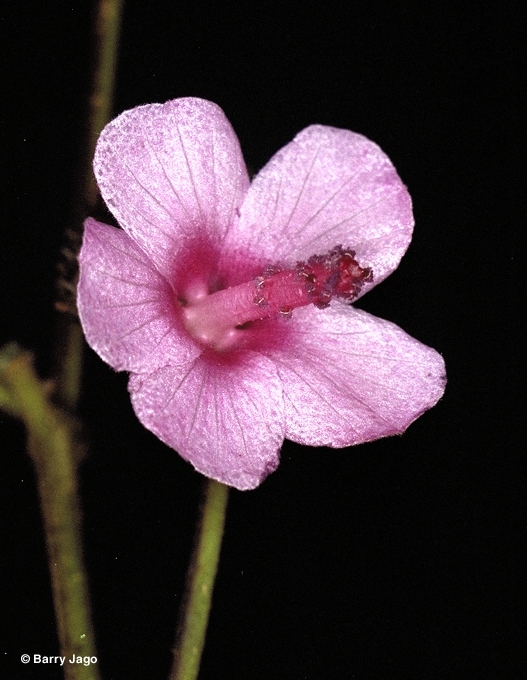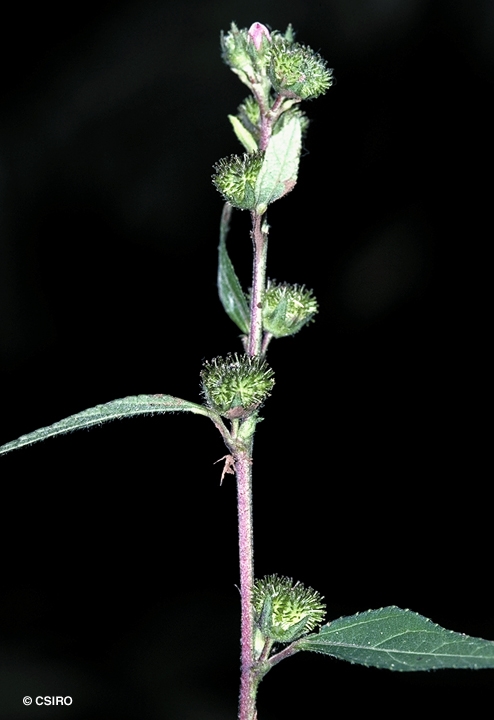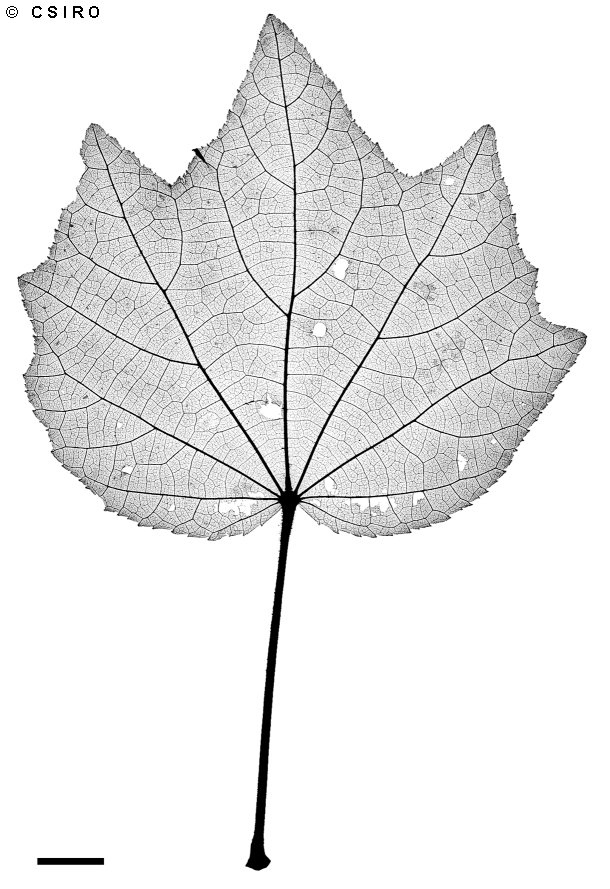Australian Tropical Rainforest Plants - Online edition
Urena lobata L.






Linnaeus, C. von (1753) Species Plantarum 2: 692. Type: ? Hortus Upsaliensis, Linn. Herb. n. 873.1; lecto: LINN. Fide Borssum Waalkes (1966).
Cadillo; Pink Flowered Chinese Burr; Urena Burr; Caesarweed; Candillo; Congo Jute; Burr, Urena; Burr, Pink Flowered Chinese; Aramina Plant; Aramina; Urena Weed; Pink Burr; Burr, Pink; Bur Mallow
Usually flowers and fruits as a shrub about 1-2 m tall.
Leaf blades broadly ovate to +/- orbicular, shallowly lobed, about 2-7 x 2-8 cm. Both the upper and lower surfaces of the leaf blade, petioles and twigs clothed in stellate hairs. Stipules linear, 2-4 mm long. One or more glands present on the midrib and major veins near the base and on the underside of the leaf blade. Twig bark strong and fibrous when stripped.
Pedicels about 1-5 mm long. Epicalyx about 7-8 x 5-6 mm, larger than the calyx proper. Calyx about 5-6 x 1.5-2 mm, outer surface clothed in stellate hairs. Corolla about 20-30 mm diam., +/- pink but with a purple centre, outer surface clothed in stellate hairs. Staminal filaments fused to form a tube about 10-14 mm long around the ovary and style. Pollen grains very large, easily seen with a lens. Stigmas eight, dark purple, hairy.
Capsules globose or depressed globose, about 1 cm diam., clothed in numerous straight trichomes or spines each ending in about 4-6 minute hooks so that the end of each one resembles a miniature grappling hook. These hooks cause the fruits to adhere to clothes, horses' manes and tails and similar objects. Calyx and epicalyx persistent at the base of the capsule. Endosperm scanty, cotyledons folded a number of times in a quite complicated fashion.
Cotyledonary petioles about 10-20 mm long, usually longer than the cotyledons which are orbicular and about 10-20 mm diam. First pair of leaves with finely toothed margins. At the tenth leaf stage: leaf blade with seven major veins (counting the midrib) radiating from the bas, both the upper and lower surfaces of the leaf blade, petiole and stem clothed in stellate hairs, sometimes simple hairs also present. Stipules linear, about 2-4 mm long. Stem bark strong and fibrous when stripped. Seed germination time 7 to 19 days.
This species has been used medicinally in Malaysia and Java. The leaves and bark are regarded as a contraceptive. Cribb (1981).





